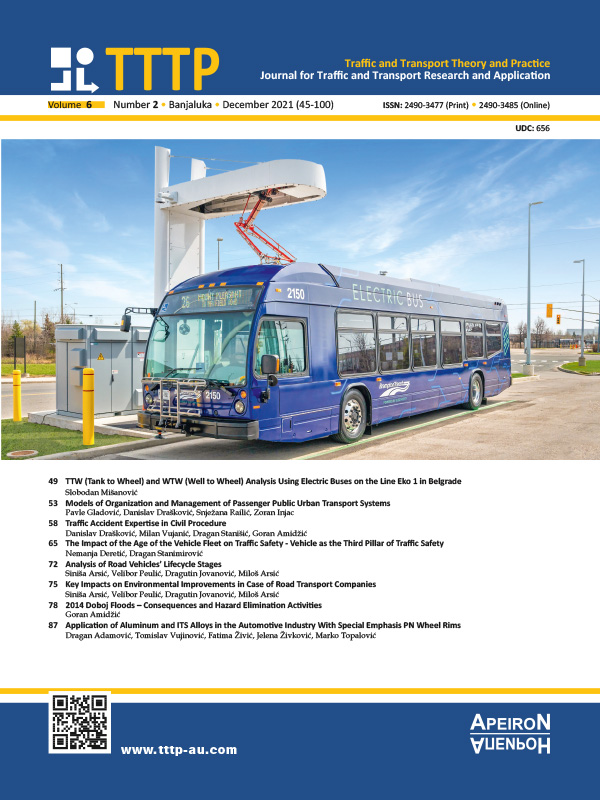Analysis of the Impact of no Passing Zones on Fuel Costs
DOI:
https://doi.org/10.7251/JTTTP2101008RAbstract
The primary task of traffic and transportation planning is to improve the conditions of traffic and level of service on the entire road network. On three sections, which were analyzed in this paper, the possibility of reducing the precentage of no passing zones was noticed, by changing the horizontal signalization on the segments of road section where the clear visibility for overtaking was determined for one direction of the two-way highway. In the first part of the paper, the analysis of traffic conditions on the existing and on the newly designed variants of all three observed road sections was performed. Analysis of the level of service on the intersections that are part of this research are done in chapter 2. Increasing the speed on the newly designed section results in a reduced travel time and this leads to savings in fuel costs as shown in chapter 3. Traffic forecast for the planning 2029 is done in chapter 4, the forecasted traffic load implies future traffic volumes for which adequate capacities of the road network need to be provided. Chapter 5 is based on determination of the relationship between the benefits brought by the newly designed variant and the costs that are realized during its construction. The results of this analysis were used as input data for the economic evaluation of the project solutions, where the savings in fuel costs were analyzed.
